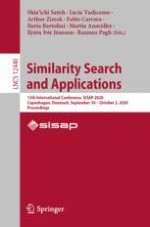2020 | Buch
Similarity Search and Applications
13th International Conference, SISAP 2020, Copenhagen, Denmark, September 30 – October 2, 2020, Proceedings
herausgegeben von: Prof. Shin'ichi Satoh, Lucia Vadicamo, Dr. Arthur Zimek, Fabio Carrara, Prof. Dr. Ilaria Bartolini, Martin Aumüller, Prof. Björn Þór Jónsson, Rasmus Pagh
Verlag: Springer International Publishing
Buchreihe : Lecture Notes in Computer Science
